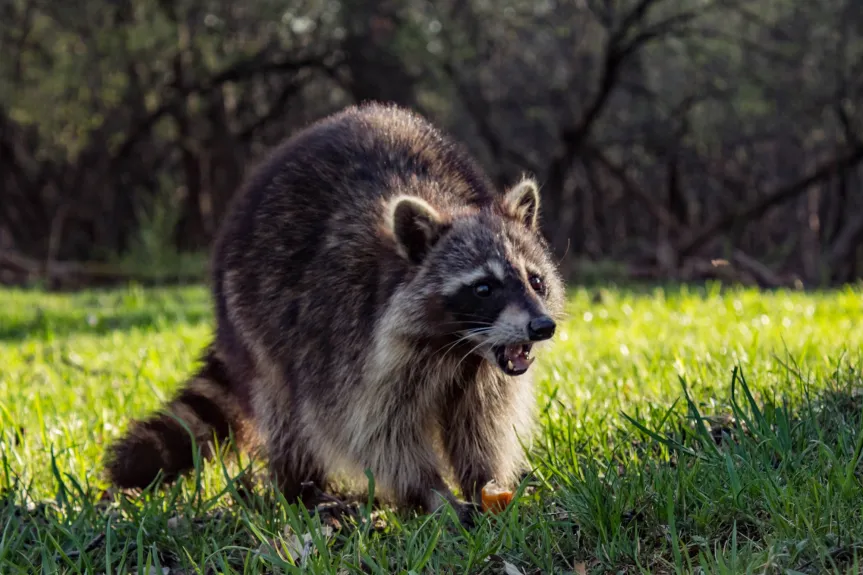Column: Be a true friend to wild animals. Don’t feed them, and here’s why

A Riverside County trapper reported catching 5,255 raccoons and 435 coyotes in a single year. That’s more than the other 603 licensed trappers in the state combined and resulted in at least one wildlife activist calling for a state investigation. (Stelsone/Getty Images)
Last week, I read a wild article about a woman in Washington state who called 911 after approximately 100 aggressive raccoons showed up in her yard.
As it turns out, this woman had been feeding a small group of docile raccoons for over 35 years. But recently, she started noticing more raccoons on her property. The number of raccoons quickly multiplied, and the new ones were not very friendly.
Eager for food, they began swarming the woman every time she stepped foot outside her house. She began to feel so unsafe that she called 911 for help.
With the Washington Department of Fish and Wildlife on the case, the raccoon matter was quickly resolved. The solution turned out to be quite simple. The woman stopped leaving food for the raccoons, and they left.
Many well-meaning folks think they are helping wildlife by feeding them. But the truth is, leaving food for wildlife is harmful and can negatively impact the entire ecosystem.
Wild animals have developed specialized diets based on their environment. But many are scavengers and will take advantage of easily accessible food sources. With a steady supply of human-provided food, wildlife may stop hunting, foraging, or scavenging as they would naturally.
Human food is typically not nutritionally sufficient for wildlife and can make them seriously ill. It can also cause the spread of disease and fights where wildlife congregate around these human-provided resources.
Feeding wild animals can also result in damage to your property. In the Washington state incident, the newly arrived “gaze” — which I recently discovered is the name for a group of raccoons — scratched the outside of the woman’s house all night in search of food.
Wild animals that are fed by humans learn to hang out in areas frequented by humans, including roadsides and parking lots. These areas expose them to many dangers, such as being hit by a car, having an altercation with someone’s pet, or meeting an unfriendlyperson who wishes them harm.
Another downside of feeding wild animals is that they start to lose their natural fear of humans and may approach humans more readily. This can be easily misunderstood as the animals being “friendly.” However, these animals continue to be wild, and manybites and injuries to humans occur because of habituation from feeding.
The stakes are higher for larger predatory species, like bears and coyotes. Those who become too comfortable near humans may be declared a public health risk, possibly leading to their removal or euthanasia by wildlife officials.
Sadly, a 500-pound black bear at Mammoth Lakes, who was so familiar to locals that he was named “Victor,” was euthanized in August after he helped himself to a meal left on a picnic table in a campground and swiped one of the campers on the leg when shestayed too close for comfort.
Being a true friend to wildlife means showing them respect by allowing them to maintain their natural behaviors. As a first step, you should never intentionally feed them, but there’s more you can do to help keep wildlife wild.
- Securely store all food and trash
- Keep your pet food and water indoors
- And, remember to always “Leave No Trace” out on the trails
- Keep a safe distance when observing wildlife, use binoculars to get a closer look
- If a wild animal gets too close, haze them by making loud noises and scaring them away
Finally, if you see an orphaned, injured or sick animal, text our Wildlife Helpline with a photo and short description to 626-344-1129.
For more information about our wildlife rehabilitation program, humane exclusion program, and educational resources regarding wildlife, visit pasadenahumane.org/wildlife
Dia DuVernet is president and CEO of Pasadena Humane.
This blog post originally appeared as a column in the Pasadena Star-News on October 18, 2024.



